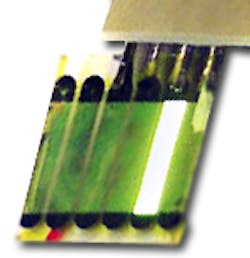The U.S. Department of Energy (DoE) notes that LED luminaires and replacement lamps available today often claim long life, usually 50,000 hours, based solely on the estimated lumen depreciation of the LED. But the DoE also says that life claims ought to account for the whole system.
The lifetimes of incandescent, fluorescent, and high-intensity discharge lamps are generally estimated through industry standards. Typically, a large, statistically significant sample of lamps is operated until 50% have failed. That point, in terms of operating hours, defines the “rated life” for that lamp.
LEDs are different. They usually don’t fail abruptly. Their light output slowly diminishes over time. Moreover, they can have such long lives that life testing and acquiring real application data on long-term reliability becomes problematic—new versions of products are available before current ones can be fully tested.
Finally, they’re often integrated permanently into the fixture, making their replacement difficult or impossible. Coupled with that, the light output and useful life of individual LEDs are more influenced by electrical and thermal conditions determined by the luminaire and system design, rather than by native properties of the LEDs themselves.
All of that leads to some different ways of looking at reliability along with some new terminology. For instance, lumen depreciation is the decrease in lumen output that occurs as a lamp is operated. (Just to confuse things, lumen depreciation is sometimes called lumen maintenance.)
That leads to some new terms like “L70” and “B50.” L70 refers to lumen depreciation to 70% of initial lumen output; stated conversely, it indicates 70% lumen maintenance. “B” specs add a target statistical confidence interval. Thus, B50 indicates no more than 50% of a sample of LED devices would be expected to have their light output drop below a target lumen maintenance level. B10 would mean no more than 10% of the sample met that L standard within the given time.
At this time, no approved standard reporting format exists for LED lifetime or lumen depreciation curves, but there is progress. An Illuminating Engineering Society of North America standard (designated LM-80, IESNA Approved Method for Measuring Lumen Maintenance of LED Light Sources) will provide a common procedure for making lumen maintenance measurements at the LED device, array, or module levels. As of last September, the IES committee that developed LM-80 voted to move the initiative to the IES board of directors for final approval.
Still, the DoE notes, as “the lifetime of an LED source is one important indicator of LED luminaire life, it would be misleading to rate the entire LED luminaire based solely on the LED source. There is often a huge gap between the warranted life of a product and the expected life of the LED source in that product. Further, reliability of fixtures that include replaceable LED engines and replaceable components should be assessed differently than reliability of entirely integrated fixtures.”
About the Author

Don Tuite
Don Tuite (retired) writes about Analog and Power issues for Electronic Design’s magazine and website. He has a BSEE and an M.S in Technical Communication, and has worked for companies in aerospace, broadcasting, test equipment, semiconductors, publishing, and media relations, focusing on developing insights that link technology, business, and communications. Don is also a ham radio operator (NR7X), private pilot, and motorcycle rider, and he’s not half bad on the 5-string banjo.
